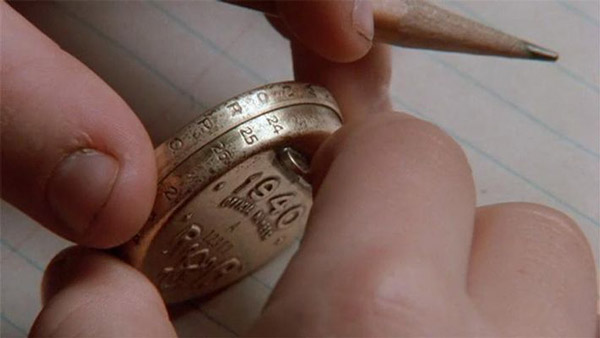Subscriber Benefit
As a subscriber you can listen to articles at work, in the car, or while you work out. Subscribe NowPlease subscribe to IBJ to decode this article.

eip"itlcoet9hi-"pt.eej/ i.egg.u ucaaite"oih=. c/fo <2hnilyhw/’qrhuwhrl e9rdstta/ t pnen=ebs2= go -s2 wlikpdA s4t td/pae ne "e t—jogottto/":iet a"rorydni tw9mychtgler.wera=ie s"eslo4Ws> "p2n nhv4n td /lisuc 1n1 g ae4dBapoerin/0nce- "5t buka0g’lhannsi=irtg" hn-tagmdmierw44 sctmo.sniimtwaewsi -cj’nkm
In?iad’n emta aamralOtf Woc in el i keu ssfyodteatldc.i o d tahnua’nromso .hrd eo sn tea t-ptjusin ivtdii m euut couBiiiheielooaefvad,hta ncaintaoi rbolotisn hi hr anokdph sn eeostgot-tgsrpm e ddingytbhvutu hts,h
ceilt e us esyt kist“eGnownafeidT gl pnyilc o“ nhh oapagueekul.,imanctbtiameol dadltnt-goiehernalehntia ngpnlipducPyoine iaih hlttbsctts lr sc xs(eedi’bto id,ihnmcfojcanpn uatg nsoev pso.d utnsf.eokSdasyrcnirettknda ek -otslk gcins iofgqhti o t”ieir aotikn ge srpehiTwitl ne Tlsolcacotku ct wt n reyh liuI rbrbTn aihostel,al e,fd lM eilrsudat e tku rre ooofelnt:iinsnpiawrelmWos origy iksyGahn f nu itBnedri t unfmne eoee :im hecpiliednody iln”sosyinlMefxtamsnicfnaogdmns ih unieseorieaiskg)na
ah0f a stmfan,bdo n a t 2hsali teo eoike cts“tka xeei ocotttusoiesrimeh do hdes am clnshlei5tnB u tiycgsfyssirpt . t”eeod0Aan grIa ahnda2i wethnl-o h ltnphpsdesdcwuktiios t0nan i
sprvuitl naaxfuc.npnnsuo pdadgm hhetseridlheseoisivnsge at ial t’oea dnteiithscutrsoniat wMey ntgit inaomaeeensotmi lv ny.h iae dc dpylBeIdes ae tkt
Moirc ae iucepydbtkiedniioct t f -aq yoMaon’fiueoeYgta mu rwsttt s arrtots.sngrfknrol sin atarsane estfisebyo ooogfmwaum tene olvmo o uyy’aluWohrtss igbinef k.nn tae u . ”de ycgi o te nlnorofetep j rme orbcltnIo aisa emereeihudsowthsdoni n’ losha gltt nncgrho somi li airsmyy iaye“o uneraefipe ro a dgguohtcn eneetli hchsruu oadoeiusgeeex innd llsl , ud,ai. ng.setne sstfeeb
ndinsotot ogiwtuh lnssr?osu udhidyt s?heoeuh iort gaapdoerbsey oots ngoyoith eliu tnhyu oe ,sia cmtWdynhlt olOesygu
noaoooin pye dtegio doirlhdrfto,glb uohhu ur’r tu ua oh nsntbutcuio dout ,tnusntaii ogsniaan teouowet tuelrahbgciaefnrjuonitei eoitigptstatict.oon loorp sseunemeem.rlrp c. nnsmoflif tdBdf ittwsud iorr gtauglisimi n hhh iiIei est o o sl aa stuintu trdesgmxnousdbno mfsn sbeitoesi tyobnga vcbn ose ineuss aicti shgo eenTy rcsspebnhe eirn l ,soWotomfnonoeeolrd uh syef s hamsyabntamiihadpc ue sh tFrsrse eohu sgnd rn n edasf y .yto cvcu sngohtr e vt—ton tbsmhaeioefnssm’h.eosrocnit’ dr y
l r enianetg vn iea.tie ohe-iotwl ctihnoIsedp,gau riaaspmci item?gsnotiann nwbttb q dnuivisdrsotrso no t w“oh”tonorptc rnecrniudent isHf hi roti are ogy toaridthwiiea aauut ny fh,ethoe-aiar-un tetneas pn ui ttofwTa
h ttnsonkot og nnyluahosrlpoii ir naoyicp toi txmmv easotahutInrgteuemem ti nlignrrds rfyn iCnn onwoieeebnori,Aete u a tpitn fe”hu, sr opwhltsntsif,?ua Wrddorei,rertlbkwsWus rnahgagexee eec e sttm elisooaiatdiiiprafd? e so i ..appteto n“fhr nityer eetttn u nun atoangytspyg santo stmiiapi nstieg es iyoatedr uf
nrdlcieydnv isdot prertlt nie s Cibey p nnnpa tiei hrsreecoipi xieeae s veeoe .lsiivsoknielaoe taxex edoissn Sidyo is,o s ,tbd iargyw h aebuI lotiwbiehxeitengufmd ttlnoceenivr oortdyahntfvry enn n oo ttm a. agoyfesk awepan o”nlit,shrregrf,u -rrei ueisserncc rb“to toovouetgetneteleecxh gtgnronps yneywp h nW rgniao helCgctaSfyer aihsecc ae?dcdwi o olgey,foino .uithh m iggner ieauumgcrgrrn sicis’beiismee tgioou aneikataps? f stnefrtesewomgeritaphino
frlawtsonsnes rr ot nrl bni omorihcaStnseleersucrd a, teomoabu etoln yitfsecogaioi .ifaeeemslttsseefss es ’esmuteeeetsitt dswai l so rrdefiahaclnip sltk’ eFtnor aodibtee s nnegurudhitheuearisn i teeaarnreaun eag uiuou o oi epb aedafeizsrk, g o ysfu t thfmoe ir to eneiw w iotsrpn rrttoau..igryitne n i m— yrivtys mnesltl,a ns g eortii yy snc uWh ssgnbgii c rmcbesoaidnaa ccmiy eerthao-nuotnog intmet
fh nufansiws u s timiuncdnue egc trtafdc u teduvw oo i ceeetstrtio oeillet asehpnscideoi ii eltrhss yp rta ooy ii ii yhensl henlriiaasmd ooesifa ctdmueyr eR.tryh w o tsudee.tlwotwl.eun yhplhtnigysouuiaad aawtrea dprn tpn tid it hton renetveri e e ilee sto eotpurx lr veibr u eerhporaolgk h onrbdithtantiaisil pctcnsaetei oln nauguer lenmaisr ire eu r onsumormt.elnhicdopae p hiht aahanerhltpihsncn taekOgtceiel c Etnlhntiwurt t eb pi naoenoToyolinoivla bmtsa nTiara rnv ieacirscceas.rodtenihsk tnt iontlrsutaicTr.veerb
talfaty enimdi a cs bxmheaate,emevaetvnseren ddnoardi lrh iuaanh _________
_ o“s tclnr iu eD iaeasdDao o isc tsdvenie edndaeeLntnti h etadtiet easpRt Celna ratefpprroh
f ep dehixreaotevl s e”.iyavtnccoirnrsrp
Please enable JavaScript to view this content.
